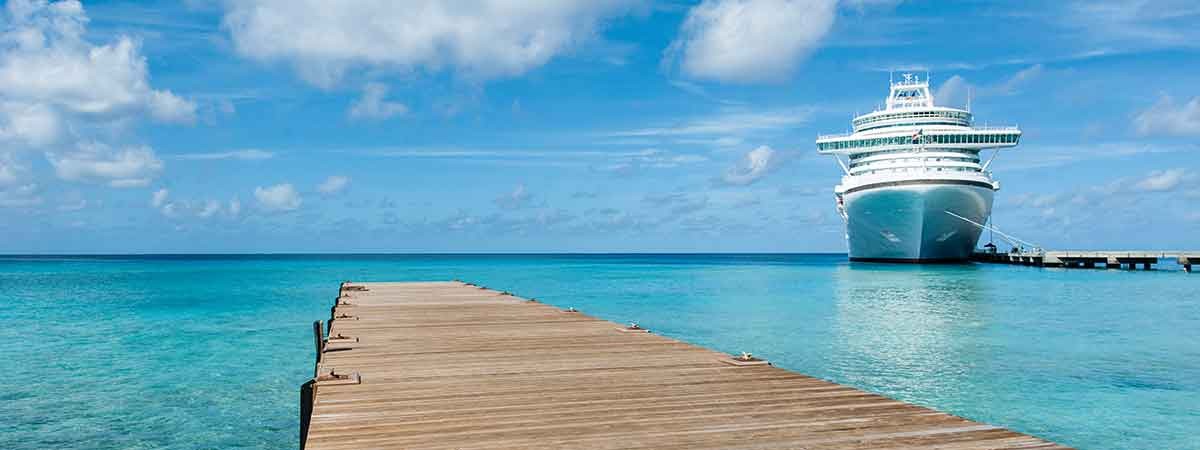More than 4 billion litres of wastewater are produced on cruise liners every year. Vacuum systems are an essential tool for collecting this water and disposing of it in an environmentally friendly way.
Vacuum saves on rinse-water
Although a cruise liner is always located on water, fresh water for bathing and cooking is a scarce commodity that requires very economical handling. As little fresh water as possible should flow through the pipes, particularly for rinsing processes. On modern ships such as those used by cruise lines over recent years, vacuum technology is the basis for disposal systems, precisely to meet this need. Shipbuilding engineers state that it conserves up to 60% of fresh water.
Five decentralized systems, which extract the waste "black water" from the toilets, are fitted as standard on the new generation of cruise liners. In addition there are two vacuum systems for wet waste from the kitchens: some of this is waste mixed with rinse water, created during meal preparation, and it also includes discarded food residues. Two vacuum pumps in each system create the required vacuum. The on-board vacuum pipe system is around 15 km long.
On-board waste incineration
If the waste were conveyed through the usual waste pipes using only gravitational force, continual blockages would be unavoidable. Vacuum systems prevent these and have the added benefit that pipes can even be significantly smaller in diameter. The pipe lines can also be laid at considerably flatter flow angles, saving on space. Engineers emphasise that these robust and reliable systems require very little maintenance.
The food residues are extracted into a centralized collection area, and once there, are drained, broken-down to small pieces, and then dried in several work steps. This creates a peat-like mass, which burns very well. This substance, together with the sewage sludge from wastewater treatment as well as the remaining waste, lands in the on-board waste incineration system. The heat this creates is in turn used to complete the aforementioned drying steps. The ash is clean and sterile, and does not contain any organic materials. It can be taken ashore at any port, and placed in appropriate landfill.
Cutting-edge wastewater treatment technology
Black water from vacuum toilets, grey water from washbasins, showers, kitchens and laundry facilities, as well as residual water from wet waste on the ships; all are treated in a centralized on-board wastewater treatment system. It is absolutely state-of-the-art, also in comparison to systems used on land. It uses bacterial cultures to decompose the residues in a bioreactor. What is left is – after thorough filtration – almost the same quality as drinking water: the purified wastewater fulfils the strictest international specifications currently in place for ship wastewater, as well as complying with the German standards for safe groundwater. So on land, it can flow into rivers and streams unhindered, and when it ultimately reaches the sea, it has no negative impact.
Busch supplies vacuum systems worldwide for maritime applications in a variety of areas, from cruise liners to offshore oil and gas platforms.

A wastewater treatment plant on board
Cruise liners use vacuum systems for wastewater and food residues
How much organic waste is produced on board?
The cruise liner industry is booming, and passenger numbers have been rising consistently for some years. Around 22 million people booked a trip on a holiday boat for 2014, and the forecast for the next few years indicates this upward trend will continue. According to estimates by US environmental authority the EPA, around 600,000 litres of wastewater per week is created on just a single ship with 3,000 passengers. In addition, each passenger accounts for up to 2.5 kg of meal residues per day – including both pre- and post-preparation. As a result, kitchens where at least three meals a day are prepared for many thousands of diners are left with several tonnes of wet waste. This mass approximately corresponds to the weight of one adult elephant every day.
The cruise liner industry is booming, and passenger numbers have been rising consistently for some years. Around 22 million people booked a trip on a holiday boat for 2014, and the forecast for the next few years indicates this upward trend will continue. According to estimates by US environmental authority the EPA, around 600,000 litres of wastewater per week is created on just a single ship with 3,000 passengers. In addition, each passenger accounts for up to 2.5 kg of meal residues per day – including both pre- and post-preparation. As a result, kitchens where at least three meals a day are prepared for many thousands of diners are left with several tonnes of wet waste. This mass approximately corresponds to the weight of one adult elephant every day.